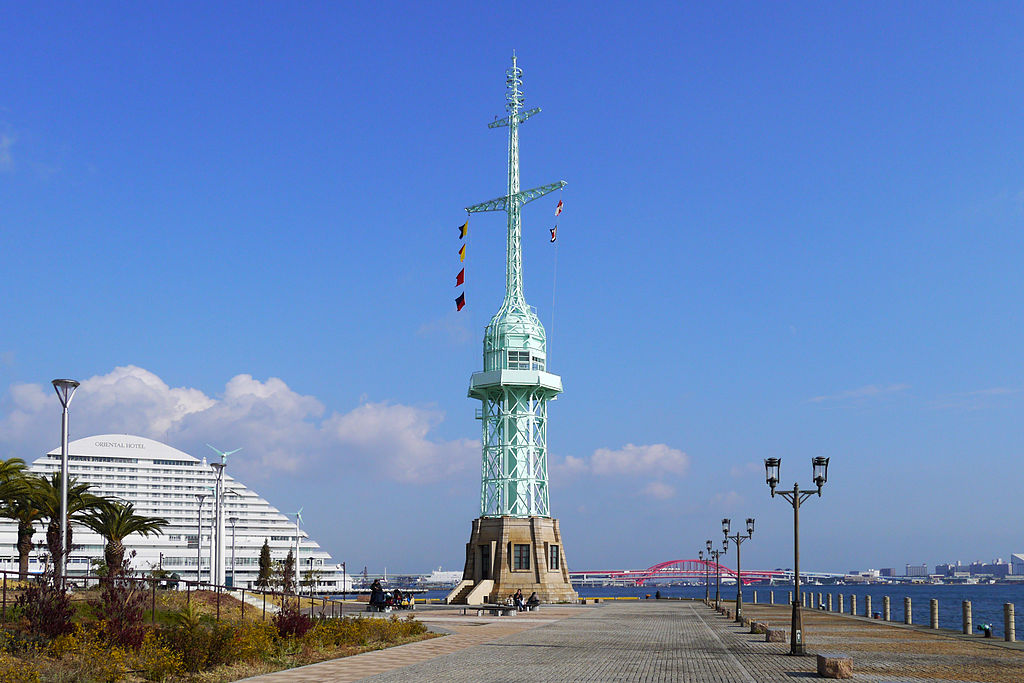Jul 24, 2017
The Lighthouses of Kobe

Being an island nation, lighthouses are an important feature of the Japanese landscape. The history of Japan’s lighthouses meanders back more than one thousand years when signal fires, the “Noroshi,” were lit during the day and bonfires, the “Kagaribi,” were built at night to signal to fishing boats on the ocean. These days the Japanese coast is one of the best lighted in the world.
The safety beacons are administered and maintained by the Maritime Safety Agency, a department of the Japanese Coast Guard. Lighthouses in Kobe City and the islands in the Seto Inland Sea are the responsibility of the Kobe office. Most of the mechanized lighthouses go about their job unnoticed unless one is a mariner trying to get a read on the coast line. But others are cultural touchstones, objects of civic pride that harken back to a different age.
The Granddaddy of All Japanese Lights
Japan has 67 lighthouses still operating from the days of their construction in the Meiji era from 1868 until 1912 when the country opened up to trade with the West. Kobe boasts a functional lighthouse even older – the only pre-Meiji lighthouse still active in Japan, in fact. The Ozekishuzo Imazu Light is located in the eastern part of the city, constructed by the Ozeki Brewery in 1810 to protect its ships coming and going in the port. In those days a keeper had to light the two oil lamps every night in the eight-meter tall building constructed on a square stone base. Today the continuous green light is automated. The ground has long since transferred from an industrial harbor to a small craft pleasure boat cove. The light is little relied upon but the Coast Guard continues to classify the 200+-year old light as an official navigation aid.
Kobe has its own Meiji-era lighthouse but it is inactive. The Wada Misaki station was established in 1871 at the west end of Kobe Harbor and a hexagonal cast iron pyramidal tower erected in 1884. It was painted red with white trim and a wooden keeper’s cottage was built at the base of the 12-meter light. When the historic beacon was taken out of commission it was removed to the Suma seaside park as a monument where it is enjoyed today. Now a series of 20-meter cylindrical concrete towers, accessible only by boat, handle the duties of illuminating the entrances into Kobe Harbor through the breakwaters.
A standout among these sentinels is the Kōbe Breakwater One East End Light. While most its fellow lighthouses are painted red, this tower is whitewashed with three oversized Japanese characters painted in black – an inscribed blessing to the port to guard it against typhoons. The Kōbe Breakwater One East End Light is one of the region’s oldest operating lights having received its commission in 1931.
The most photographed historic navigation aids in the city are perched in Kobe Harborland. Old Shinko No. 5 Pier Signal Tower rises 46.3 meters from a handsome rusticated stone base to display flags that guided ships in and out of the harbor. The flags represent Kobe to incoming ships and also prayers for those vessels heading out to sea. When it was constructed in 1921, the signal tower was hailed as the finest in all of Asia; it continued at its post until 1990. Also at Harborland is the red-capped Mosaic Watch Tower that watched over cargo ships coming to dock beginning in 1914.
By Oilstreet (Own work) [GFDL, CC-BY-SA-3.0 or CC BY 2.5], via Wikimedia Commons


About the author